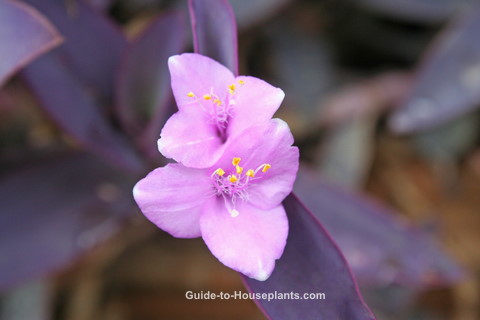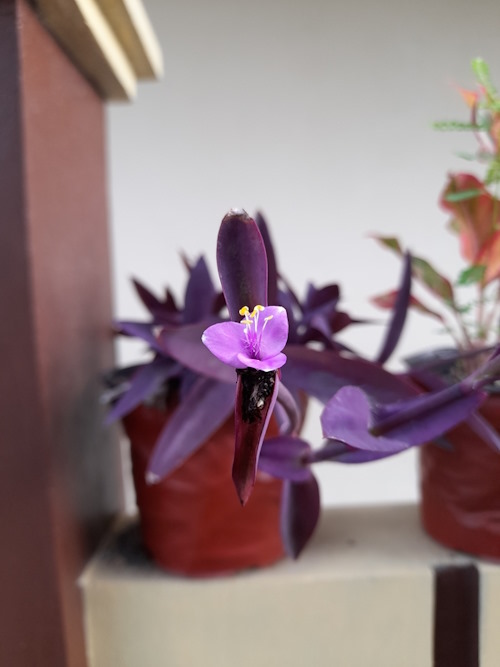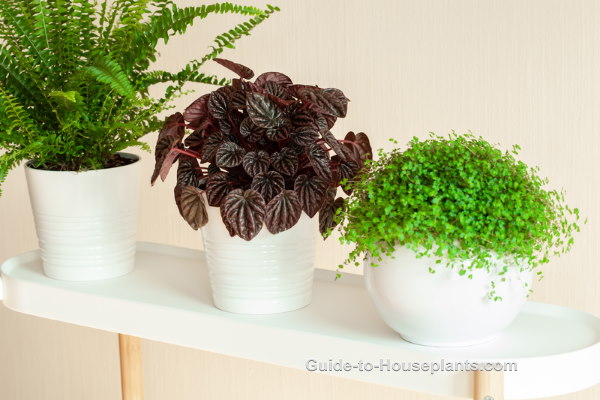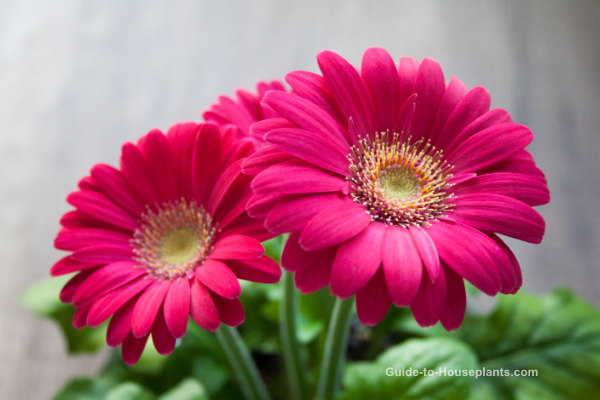Tradescantia pallida - Purple Heart Plant
Botanical Name: Tradescantia pallida
If you've never grown Purple Heart Plant, you may want to add it to your collection. It's in the spiderwort family along with the purple-and-silvery green striped Inch Plant, and you'll find it's just as easy to grow. T. pallida is also known as Setcreasea purpurea.

Get to Know Purple Heart Plant
Bunches of rich purple, lance-shaped leaves make this a beautiful house plant year-round. Pot Purple Heart Plant in a small decorative container for an eye-catching table accent. Or hang it in a basket and let the long, sprawling stems cascade over the side.
You'll want to handle this plant carefully; its fleshy stems are brittle and may break off. It's a good idea to place Purple Heart Plant where you won't brush against it.
In summer, you can expect small, pink 3-petaled flowers to bloom. They grow in the leaf axils, making a stunning contrast to the dark foliage.
You can keep your plant indoors year-round. But if you move it outdoors for the summer, keep it shaded from direct sun during the hottest part of the day. Also check the soil every couple days so that it doesn't dry out.
Growing Tradescantia pallida Indoors
Let the sun shine in. Grow your plant in bright light year-round for good foliage color. It will grow in lower light, but the leaves will be more green than purple. Give it some direct sun, but shade it from hot, noonday sun in summer to avoid scorching its leaves.
Pinch your plant. Pinching off new stem tips will promote branching and keep Tradescantia pallida compact. Don't toss out those cuttings -- you can easily propagate them for more plants. If your plant becomes straggly with long gaps between leaves, don't be afraid to prune stems back to about 6 in (15 cm) long.
Repot in spring, when you see roots growing through the drainage holes. Move up to a pot only 1 or 2 inches (2.5 - 5 cm) larger to give it a little room to grow. Use a pot with drainage holes to prevent soggy soil, which leads to root rot. Want to use a decorative planter without drainage holes? Use it as a cachepot -- just slip a plain nursery pot into the cachepot. I put pebbles in the bottom of cachepots to keep the pot above the drainage water.
Buying Tip for Tradescantia Pallida
T. pallida is also known as Setcreasea purpurea and is sometimes sold under that name.
 Image © Dreamstime
Image © DreamstimeTradescantia Pallida Care Tips
Origin: Mexico
Height: Stems grow upright, then eventually trail over the side of the pot, up to 2 ft (60 cm) long.
Light: Bright light is needed to maintain the dark purple color. Some direct sun is fine, but keep your plant shaded from strong summer sun. Long spaces between leaves indicate Tradescantia pallida needs more sunlight.
Water: Water thoroughly, then allow the top 1 in (2.5 cm) to dry out between waterings. Water less in winter when growth is slower. Limp, wilted stems may be a sign of root rot; cut off entire stem at the soil level.
Humidity: Average room (around 40% relative humidity). Brown leaf tips are a symptom of dry air. Check out these easy ways to add humidity around your houseplants.
Temperature: Average to warm room temperatures (65-80°F/18-27°C) suit this plant year-round. Purple heart tolerates varying temperatures with a minimum of 50°F/10°C in winter. Keep out of drafts from doorways and away from heat/AC vents.
Soil: Peat moss-based potting mix, such as African violet potting mix is ideal.
Fertilizer: Feed monthly in spring and summer with a balanced (such as 10-10-10 NPK) water-soluble fertilizer.
Propagation: Take 4 in (10 cm) stem tip cuttings in spring or early summer. They'll root easily in moist potting mix.

